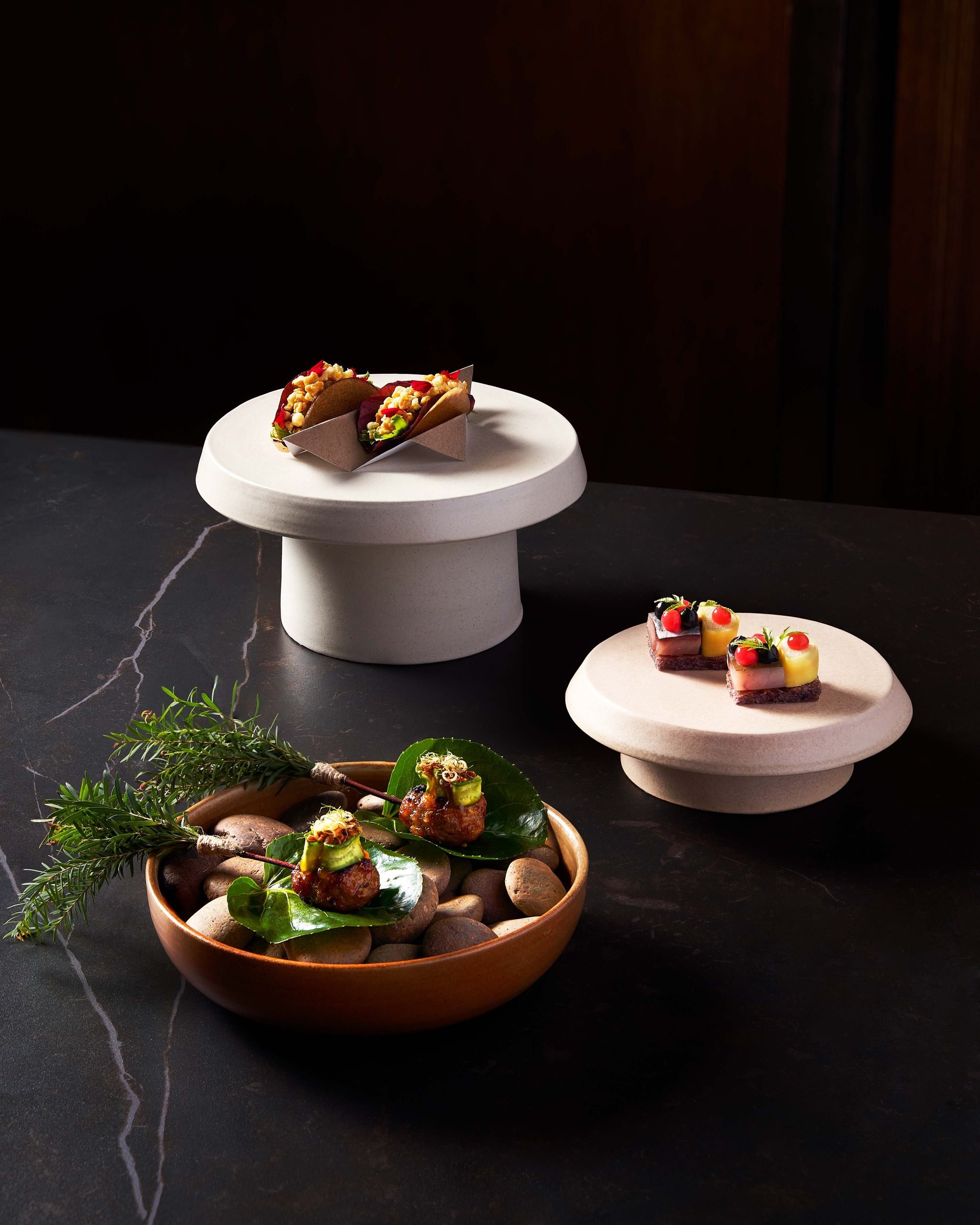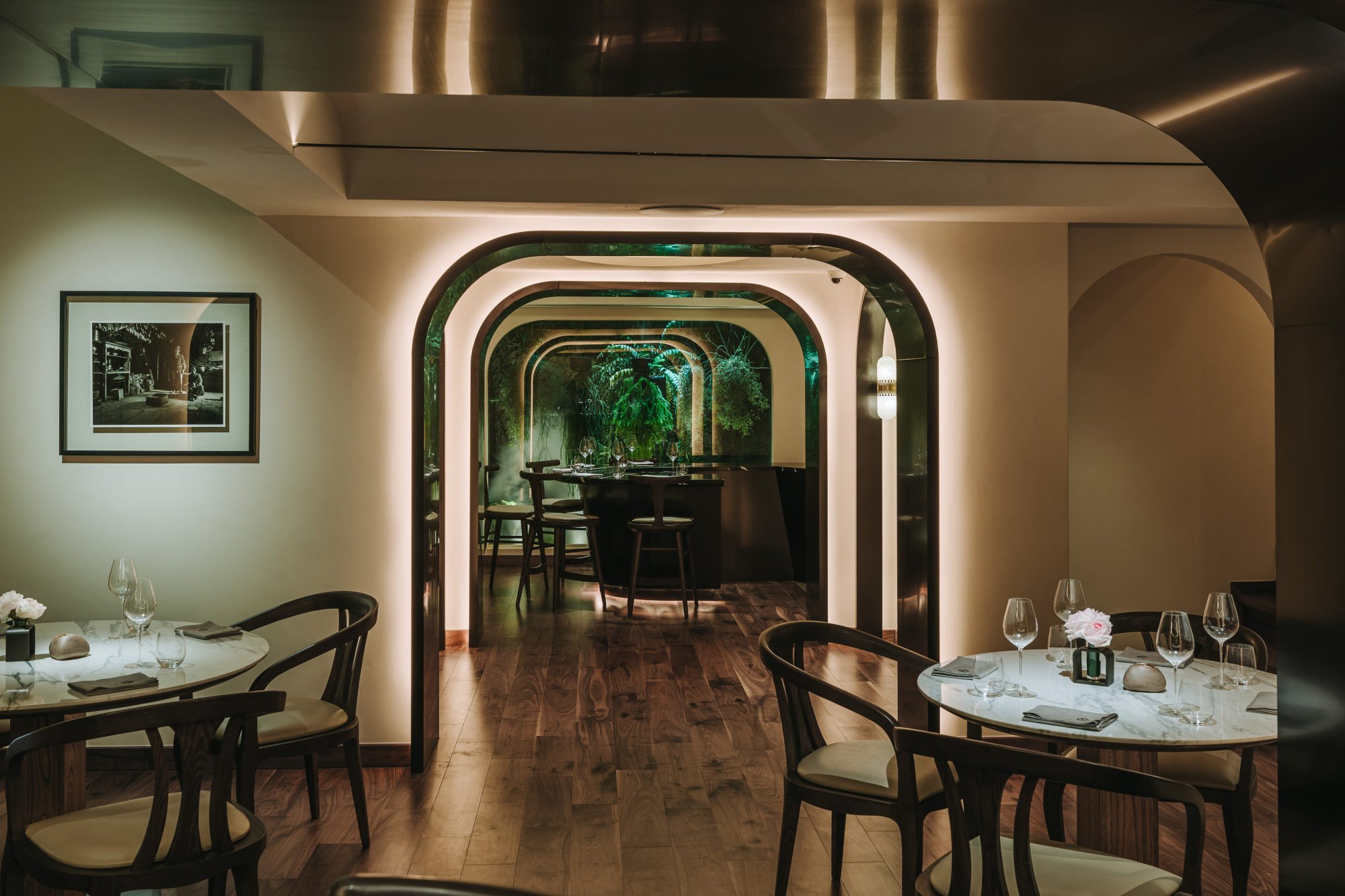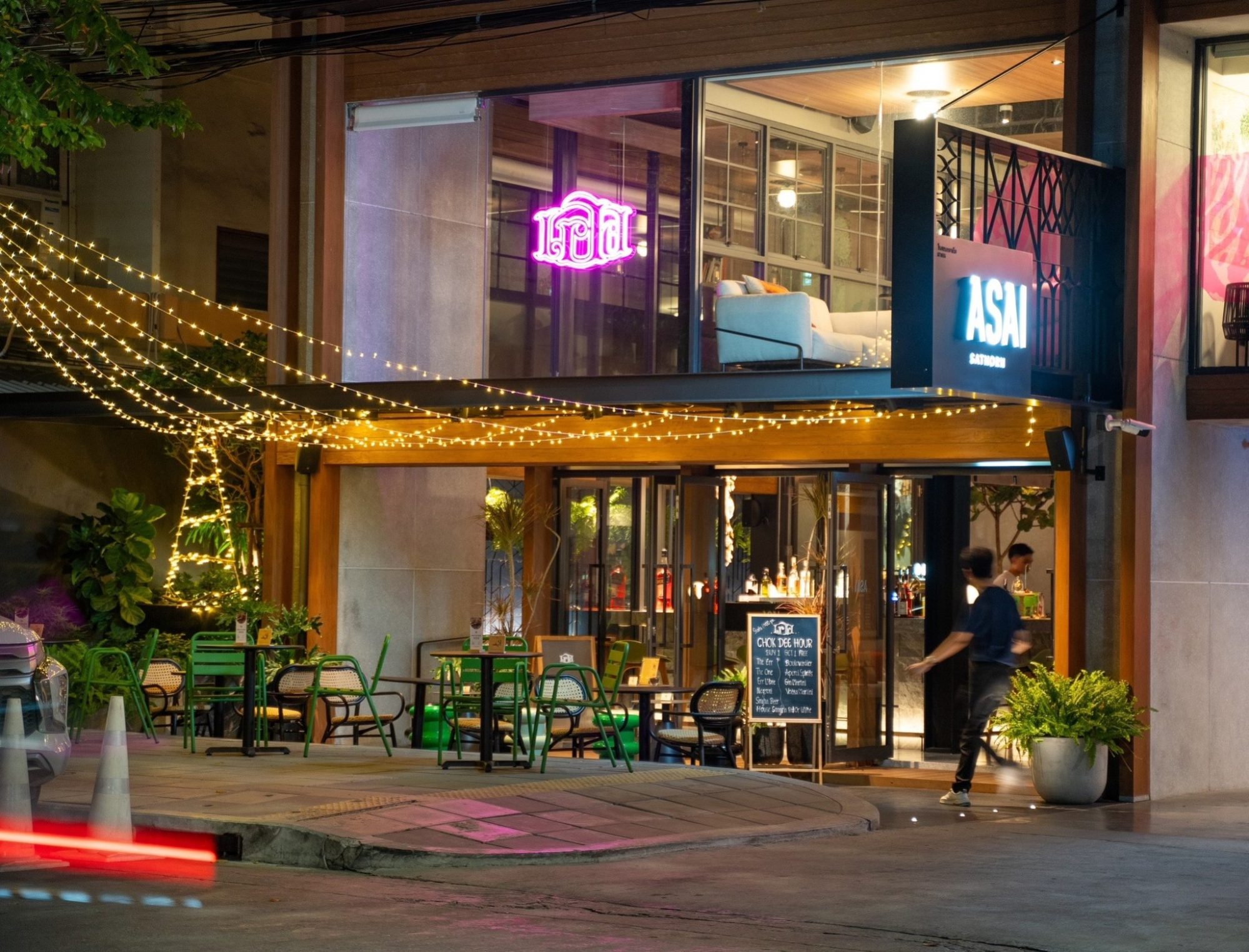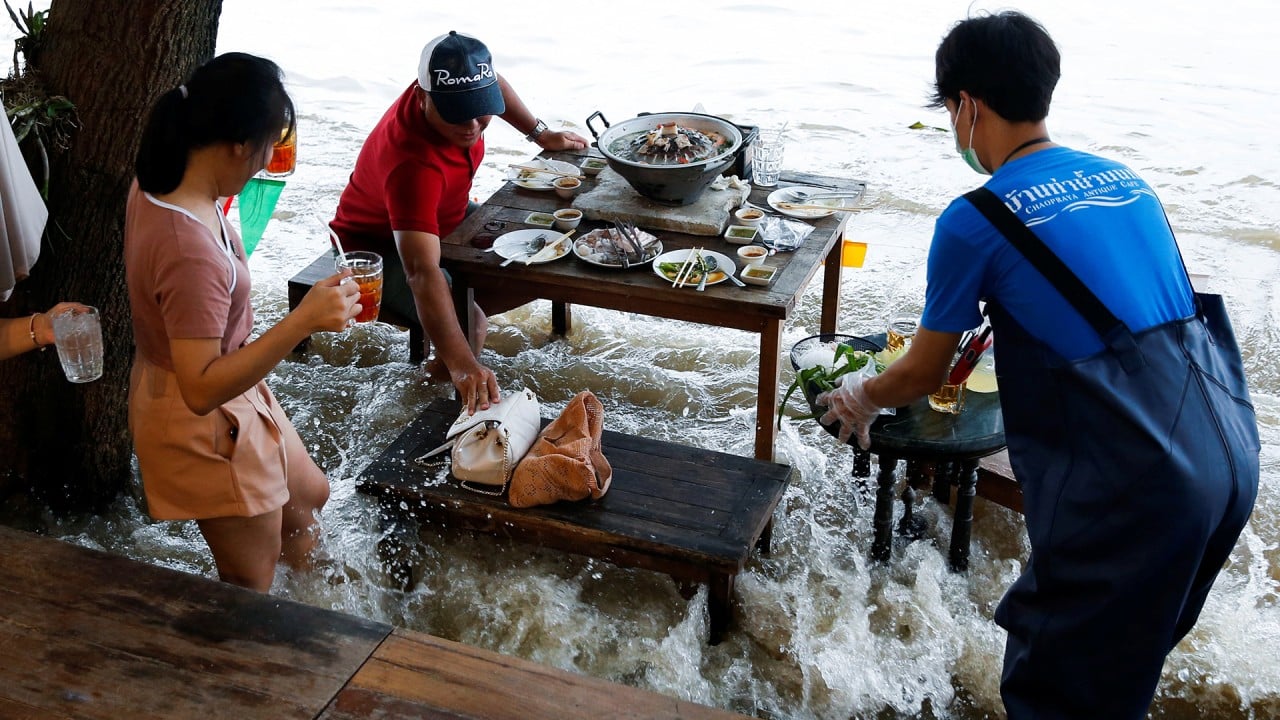Sour catfish soup (200 baht/US$5.70) is ladled into tiffin pots at top speed. It contains silken mushrooms, sharp bones and enough chilli to resurrect someone’s Laotian grandmother.
Pork belly comes crisped with enough fermented fish sauce to elicit an umami crackle.
10 places to eat auspicious Lunar New Year meals in Hong Kong
10 places to eat auspicious Lunar New Year meals in Hong Kong
At Penlaos, most dishes comprise a mere three or four ingredients, often raw, giving chefs no place to hide from the martinet Michelin inspectors.
Many tables are occupied by four guests, who typically order 12 dishes between them. Having a single wrap of pork-studded lotus stem (150 baht), with its unctuous texture, is considered amateur.
How does it feel for a former street stall to be awarded a Bib Gourmand (given by Michelin inspectors to places that serve “exceptionally good food at moderate prices”)? “I heard it on the news,” says Penlaos owner Panchana Vatanasathien. “We screamed!”
Significantly, the new entrants to the Michelin Guide Thailand 2024 have elevated an entire ecosystem of farmers and fishermen, and redefined fine dining in the country. I take the train from Isaan to Hua Lamphong station in downtown Bangkok, past ripening vanilla pods, then forests of skyscrapers, to find out more.

I arrive for dinner at Baan Tepa, newly awarded its second Michelin star. It’s the personal theatre of 31-year-old Chudaree “Tam” Debhakam, one of many women chefs who have risen to prominence in the country.
The interior recalls 1920s Paris, with staff in white tunics and tight red pants. My waiter is 20-year-old Benz, who announces dishes like a Shakespearean narrator. A three-hour performance (5,500 baht for nine courses) is about to begin.
The first course is a single bite of fermented mushroom inside a noon chilli taco, topped with pork crackling puffed to a cloud – imagine the world’s yummiest Dorito chip.

The fourth course is a silken scoop of dong dang noodles, blackened with squid ink then pepped up with lemongrass from Baan Tepa’s garden. The dish’s otherworldly chew will stay with me for weeks.
It takes a brave chef – like Tam – to serve a palate cleanser of pressed clam juice with puréed apple, as green as a Haribo gummy with the earthy heft of Laphroaig whisky. Wines include Thai vintages from GranMonte, a female-owned winery near Penlaos.
The cuisine from Tam’s open kitchen appears effortless. Yet it disguises a big sacrifice. “I’ve skipped out on a lot of parties, weddings and family trips,” she concedes. Tam also renovated the 50-year old building that houses the restaurant, and has learned business management on the job.
Her menu is a laser-focused distillation of Thai flavours, honed by years of travel and engagement with regional producers. “Our food is by no means traditional,” Tam says, “but there is a story behind every dish.”
Riverside restaurant Suan Thip looks like a Japanese garden gone feral. Ponds dotted with giant lotus leaves are shaded by century-old fig trees.
Its sixty-something chef, Banyen Ruangsantheia, “didn’t know who or what Michelin was” when Suan Thip was awarded its star a few years ago. It shows. Her cooking would win plaudits at a Thai society wedding – one held in 1974.
For a chef, one star is a stepping stone. Now we strive for two: more flavour, more passion, more hard work
Self-trained chef Banyen, a former housemaid, is a master of texture. Sesame prawn dipped in apricot syrup is a three-ingredient paean to sweetness, crunch and chewiness. Her yum hua plee (banana blossom salad) combines cooking techniques – fried shallots, roasted peanuts, dried coconuts, puréed tamarind – and a riot of different smells. It’s brilliant.
Time is tight, so I book a Grab motorbike taxi to my next Michelin-star target. It’s a 30-minute roller-coaster ride through Bangkok, where 50-storey residences tower above floating food pop-ups. My driver revs past street stalls known only to tuk-tuk pilots that sell eat-while-you-drive bags of century eggs and fish ball soup for 20 baht a pop. Cities like Singapore and Seoul live by rules. Bangkok lives by its wits.
Inddee opened just a few months ago and was awarded a Michelin star in the 2024 edition of the Thailand guide published in December. Head chef Sachin Poojary distils flavours of the Indian subcontinent inspired by his staff, who hail from every corner of India, and with a nod to Thailand’s half-million inhabitants of Indian descent.

“Since we won the star in December, bookings have gone nuts,” says Poojary. At his side is Thanakorn “Jay” Bottorff, newly crowned Michelin sommelier of the year. They lay me a private table beside the kitchen to try Inddee’s 3,200 baht tasting menu. Hopes are high.
Poojary pairs the fast hands of a boxer with the calm disposition of a doctor. He jabs dish after dish towards me, each explained in his discreet whisper while he conducts a silent orchestra of cooks behind.
One course is a shucked oyster topped with the mango lime foam of a solkadhi coconut shake, a traditional palate cleanser from western India, that explodes like an ozone citrus bomb. Another course comes from eastern India: black Kolkata cod with gondhoraj Bengali limes and kasundi, a relish fermented for up to 12 years.

After seven rounds I’m floored by Inddee’s ingenuity and originality. Can Poojary rest on his parathas? Far from it.
“For a chef, one star is a stepping stone,” he explains. “Now we strive for two: more flavour, more passion, more hard work.”

At Côte, his first Asian outpost, in Bangkok’s Capella hotel, Colagreco has taken Thai cuisine to Monte Carlo and back. It’s fun fine dining with a panoramic view of the Chao Phraya river.
My set lunch menu for 2,250 baht features an earthy tiramisu of sea urchin, trumpet mushroom and brown butter. A single bite of hamachi tartare meets papaya and caviar pops in a sweet explosion.
“Mauro travels to Thailand and has a passion for local ingredients,” says Côte’s head chef, Davide Garavaglia, who was named Michelin’s 2023 young chef of the year.
There’s time for one last lunch before the airport lounge. Err Urban Rustic Thai inside the new Asai Sathorn hotel is the love child of trailblazers Bo and Dylan James, who made it onto the Asia’s 50 Best Restaurants list a decade ago with Bo.lan.
Their 399 baht set lunch is a modern Thai travelogue of Isaan cured sausage, southern palm sugar ribs and lashings of holy basil. Like the other new Michelin awardees, it is memorable, affordable and totally Thai.
Tristan Rutherford was a guest of Asai Sathorn (asaihotels.com/locations/bangkok-sathorn) near Chinatown, Bangkok. Doubles from 2,000 baht.








